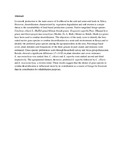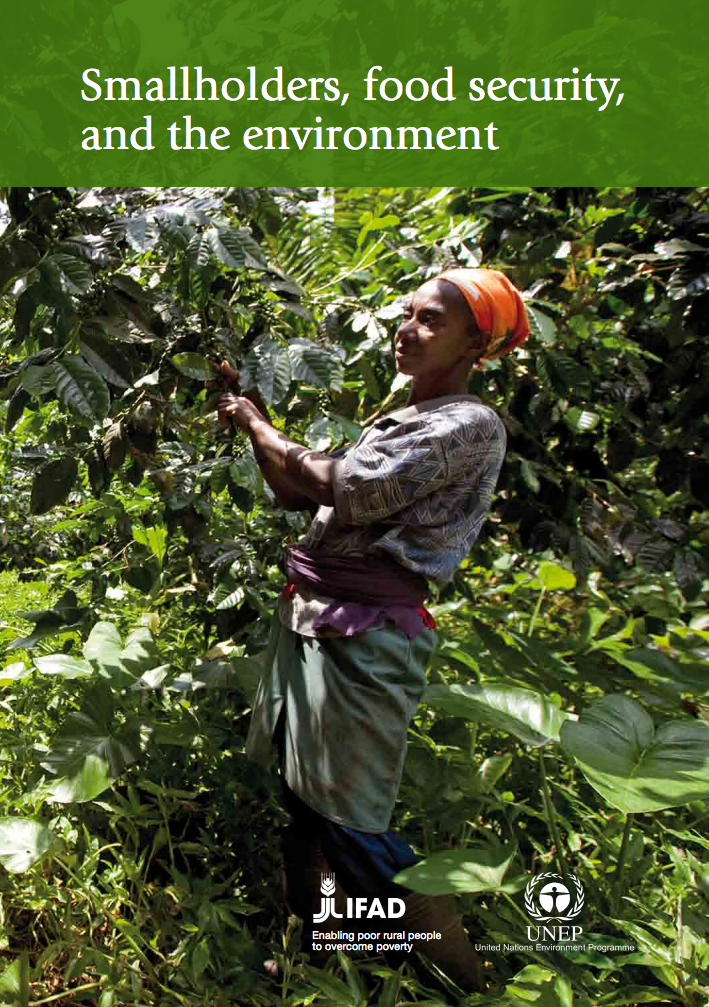The choice of grass species to combat desertification in semi-arid Kenyan rangelands is greatly influenced by their forage value for livestock
Livestock production is the main source of livelihood in the arid and semi-arid lands in Africa. However, desertification characterized by vegetation degradation and soil erosion is a major threat to the sustainability of land-based production systems. Native rangeland forage species Cenchrus ciliaris L. (Buffel grass/African foxtail grass), Eragrostis superba Peyr. (Maasai love grass) and Enteropogon macrostachyus (Hochst. Ex A. Rich.) Monro ex Benth. (Bush rye grass) have been used to combat desertification.
Democratic Republic of Congo
T he Democratic Republic of Congo (DRC) committed to the mitigation of the effects of climate change by signing the Kyoto Protocol for climate change and other related environmental management protocols. Since 1994, DRC has produced two national climate change communication documents (RDC, Ministère de l’Environnement, Conservation de la Nature, Eaux, et Forêts 2001; RDC, Ministère de l’Environnement, Conservation de la Nature et Tourisme 2009).
Designing a Multipurpose National Forest Inventory to Reduce Emissions from Deforestration and Forest Degradation (REDD+)
The deforestation and forest degradation that have been recorded in recent years are significant contributors to greenhouse gas emissions (GHG). To slow and possibly reverse this trend, the Royal Government of Cambodia (RGC) joined the initiative under the UN Framework Convention on Climate Change (UNFCCC) to Reduce Emissions from Deforestation and Forest Degradation in Developing Countries (REDD+).
National Forest Monitoring Systems: Monitoring and Measurement, Reporting and Verification (M & MRV) in the context of REDD+ Activities
This document builds on the brief paper presented at the 7th Meeting of the UN-REDD Programme Policy Board, held in Berlin, October 2011 (UNREDD/PB7/2011/13), which lays out ways to consider the REDD+ monitoring and information provision needs in the broader context of national development and environmental strategies, at the implementation level.
Designing a Multipurpose National Forest Inventory to Reduce Emissions from Deforestration and Forest Degradation (REDD+)
Smallholders, food security, and the environment
There are 1.4 billion poor people living on less than US$1.25 a day. One billion of them live in rural areas where agriculture is their main source of livelihood. The ‘green revolution’ in agriculture that swept large parts of the developing world during the 1960s and 1970s dramatically increased agricultural productivity and reduced poverty. Many of the productivity gains accrued to smallholder farmers, supported through research and extension services.
Human Impact and Land Degradation in Mongolia
Climate warming and human actions both have negative impacts on the land cover of Mongolia, and are accelerating land degradation. Anthropogenic factors which intensify the land degradation process include mining, road erosion, overgrazing, agriculture soil erosion, and soil pollution, which all have direct impacts on the environment. In 2009–2010, eroded mining land in Mongolia increased by 3,984.46 ha., with an expansion in surrounding road erosion. By rough estimation, transportation eroded 1.5 million ha. of land.
Devolution : a mechanism for scaling adoption of sustainable land management in Eastern Africa highlands
Land degradation is severe in the steep sloping highlands in eastern Africa; natural resource management is central to good governance and increasing enfranchisement of rural people. Devolution, the transfer of roles, responsibilities and rights of natural resource management to institutions and communities has proved effective in accelerating adoption of sustainable land management (SLM) innovations beyond pilot sites. The SLM technologies practiced in the area include the use of trenches, contour bunds, terraces and agro forestry.
Stronger UNCCD for a land-degradation neutral world. Issue brief
Land-degradation neutral world is an aspirational goal, which was agreed at the UN Conference on Sustainable Development (Rio+20) in June 2012. To achieve this goal, land degradation should be avoided and for every hectare of degraded land a hectare of land should be restored preferably in the same ecosystem and landscape. A land-degradation neutral world is a prerequisite for assuring water, food and energy security, alleviating poverty and mitigating climate change.
Costs and Benefits of Policies and Practices Addressing Land Degradation and Drought in the Drylands. White Paper II
Drylands are complex social-ecological systems, characterized by non-linearity of causation, complex feedback loops within and between the many different social, ecological, and economic entities, and potential of regime shifts to alternative stable states as a result of thresholds. As such, dryland management faces a high level of uncertainty and unpredictability.







